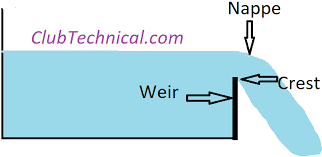Skylights
A skylight can provide your home with daylighting and ventilation. Because skylights are located on the roof, they can result in unwanted additional heat in summer and loss of heat from the inside of the hom in the winter. To make skylights more energy efficient, manufacturers use various glazing technologies including heat-absorbing tints, insulated glazing, low-emissivity (low-e) coatings, or translucent insulation material between several glazing layers.
Tubular Skylights
Recent developments in skylight design use sun-tracking, open-sided cylinders; large lens-like elements; or mirrored reflectors mounted adjacent to a conventional skylight to provide daylighting without daytime heat gain or nighttime heat loss.
Such a skylight may connect to a mirrored pipe or "light pipe" with a diffusing lens that mounts on or is recessed into the ceiling of the room below. Most tubular skylights have this feature. Tubular skylight designs do not, however, provide views or ventilation.
Ventilation
Skylights can provide ventilation as well as light. Ventilating a building with an operable skylight releases the hot air that naturally accumulates near the ceiling. Ventilating skylights usually open outward at the bottom, and some units vent through a small, hinged panel. Skylights may be opened manually with a pole, chain, or crank.
Roof Windows
Larger skylights that can be used as emergency exits are sometimes called "roof windows" and are located within a few feet of the floor.
Automated Skylights
Automated units with electric motors or pneumatic devices are also available. Some models incorporate moisture sensors to automatically close the skylight when it rains.
Skylight Design Considerations
Before selecting a skylight for your home, determine what type of skylight will work best and where to place it to optimize its contribution to your home’s daylighting and ventilation.
Selection
It's a good idea to understand the energy performance ratings of skylights so you can select your skylight based on the local climate and your home's design.
The physical size of the skylight greatly affects the illumination level and temperature of the space below. As a rule of thumb, the skylight size should never be more than 5% of the floor area in rooms with many windows and no more than 15% of the room's total floor area for spaces with few windows.
Those on east-facing roofs provide maximum light and solar heat gain in the morning. West-facing skylights provide afternoon sunlight and heat gain. South-facing skylights provide the greatest potential for desirable winter passive solar heat gain than any other location, but often allow unwanted heat gain in the summer.
Glazing
Skylight glazing is usually either plastic or glass, although other glazing technologies may be used for solar heat control. Depending on the performance you expect from a skylight, you may choose different types of glazing for different skylight locations throughout your home.
Plastic glazing is usually inexpensive and less liable to break than most other glazing materials. However, plastic surfaces scratch easily, and they may become brittle and discolored over time.
Acrylics and polycarbonates are the most commonly used plastic glazing. Acrylics are weaker but less expensive than polycarbonates.
Shapes
Skylights are available in a variety of shapes and sizes. The most common shapes include rectangular, circular, oval, diamond, triangular, multi-sided, and tubular.
The glazing can be flat, arched, domed, pyramidal, or "warped plane"—flat on the low side and concave in section on the high side.
Tubular skylights are smaller than most other skylights. They consist of roof-mounted light or solar collectors, which increase their daylighting potential without the need to increase their size. Because the rooftop solar collector has a small surface area, tubular skylights minimize heat loss in the winter and heat gain in summer. Their small size also minimizes their impact on a home's architecture.
Installation
Even the most energy-efficient skylight must be properly installed to ensure that it achieve its energy performance, so it's best to have a professional install your skylight.
Slope
The slope or tilt of the skylight affects solar heat gain. A low slope will admit relatively more solar heat in the summer and less in the winter, exactly the opposite of what is desirable.
As a general rule of thumb to optimize solar heat gain in winter and minimize solar heat gain in the summer, you want to achieve a slope equal to your geographical latitude plus 5 to 15 degrees.
Moisture Control
Water leaks are a common problem with improperly installed skylights. Avoid water leaks by:
- Mounting the skylight above the roof surface
- Installing a curb (a raised, watertight lip that helps to deflect water away from the skylight) and flashing
- Thoroughly sealing joints
.jpeg)
.jpeg)



Comments
Post a Comment